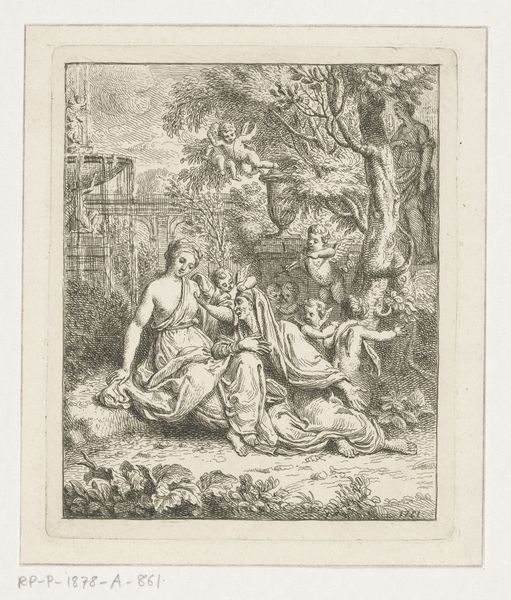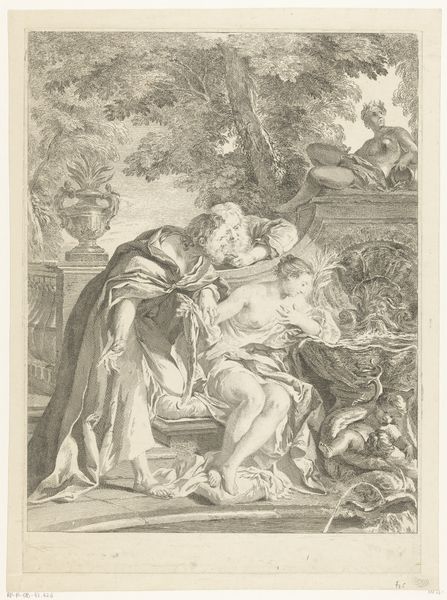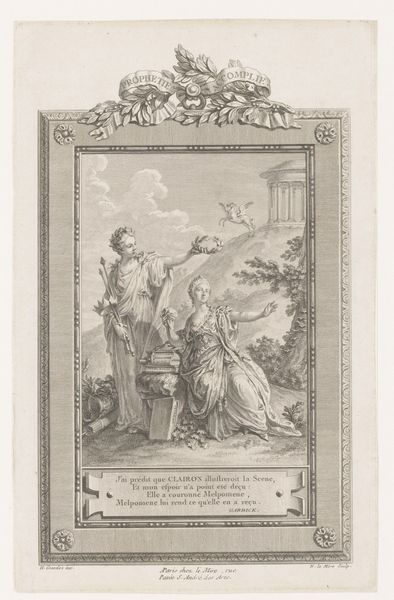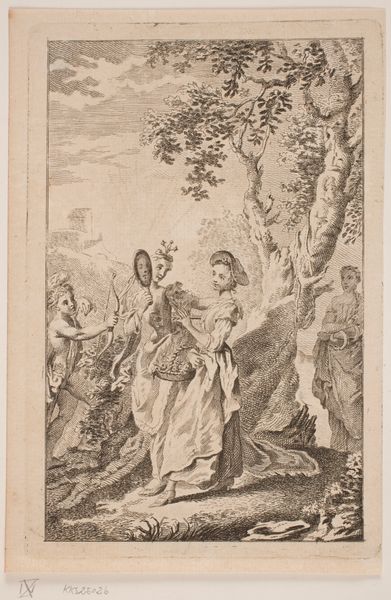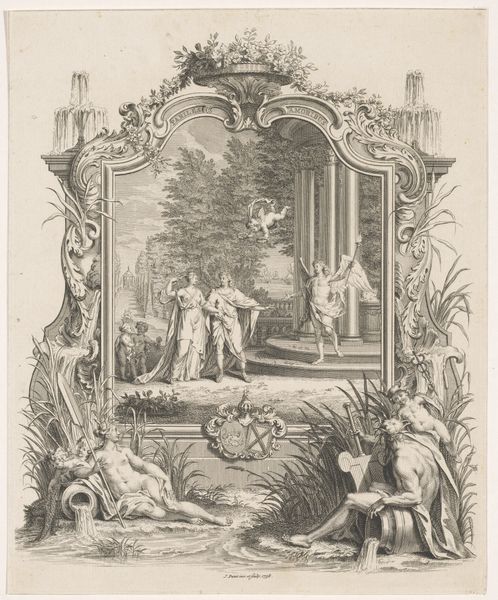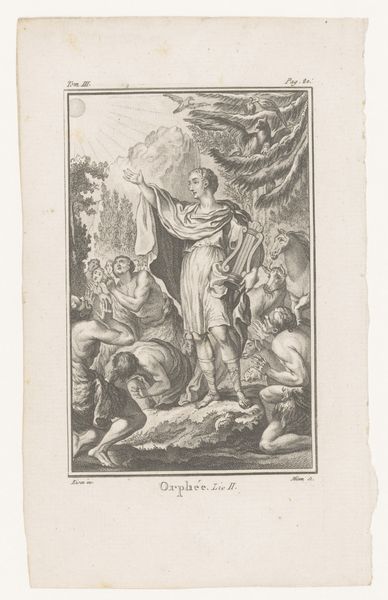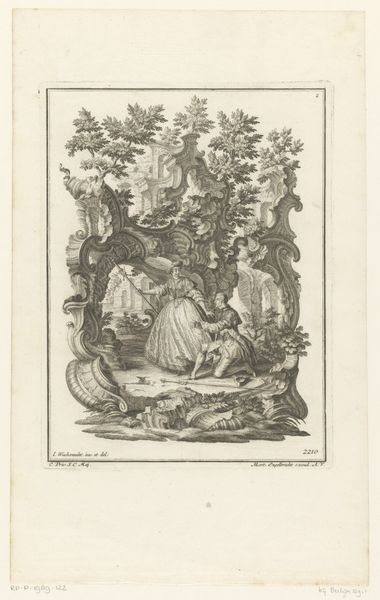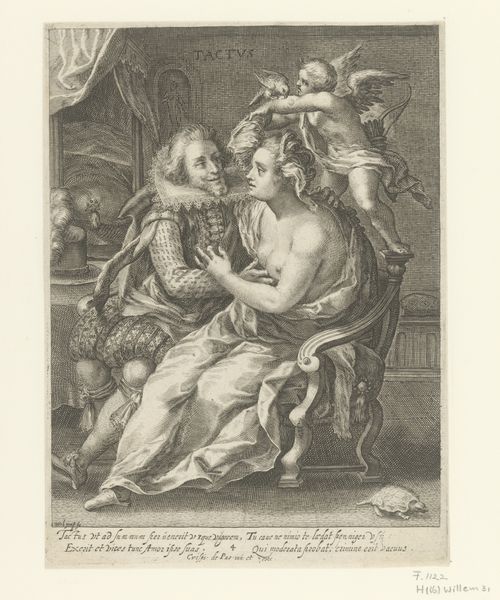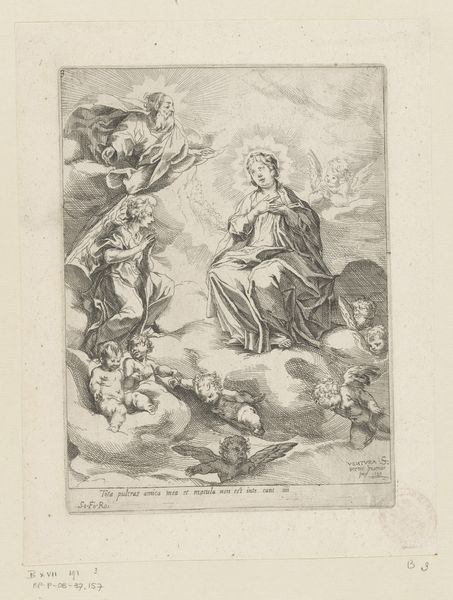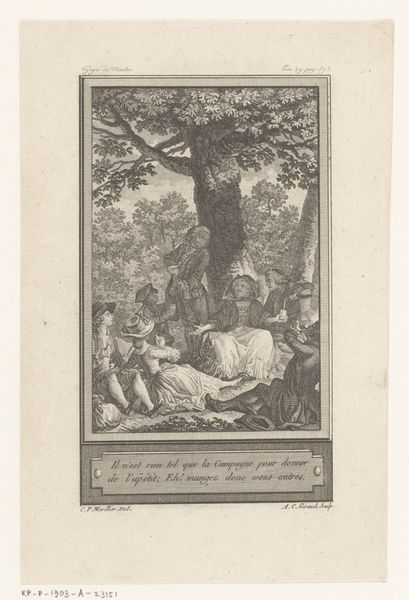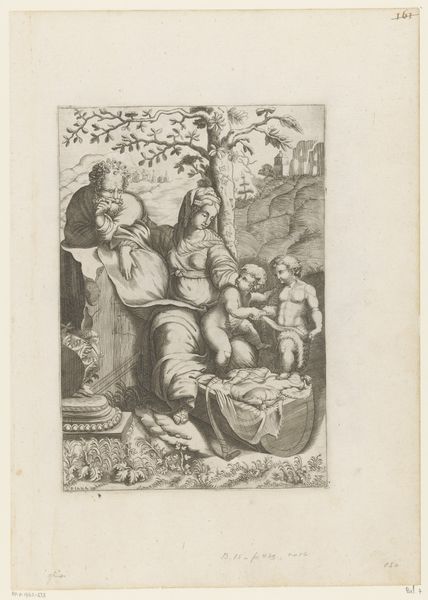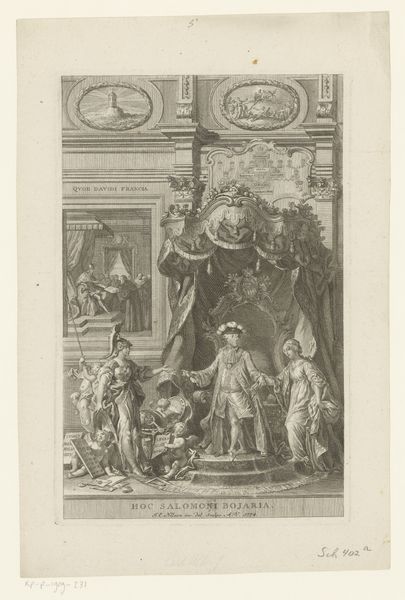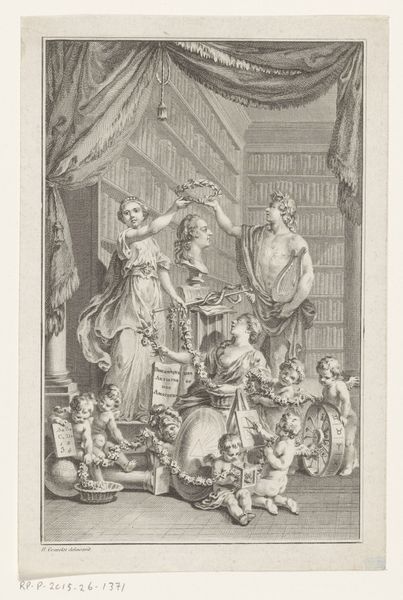
Vertumnus Transforms Himself into an Old Woman and Attempts to Woo Pomona, from Les Métamorphoses d'Ovide en Latin et en François de la traduction de M. l'Abbé Banier de l'Académie Royale des Inscriptions et Belles-Lettres. Avec des explications historiques. A Paris Chez Despilly rue saint Jacques à la croix d'or. MDCCLXVII. Avec Approbation et Privilège du Roi 1760 - 1770
0:00
0:00
Dimensions: Sheet: 7 5/8 × 5 3/16 in. (19.4 × 13.1 cm)
Copyright: Public Domain
Curator: This engraving from the 1760s, now at the Metropolitan Museum, depicts a scene titled 'Vertumnus Transforms Himself into an Old Woman and Attempts to Woo Pomona,' after a design by François Boucher. Editor: My immediate impression is one of ornate theatricality, it has such high contrast with its tightly woven lines that add to this almost exaggerated sense of drama, all framed within that garlanded border. Curator: Indeed! It's a great example of the Rococo influence in printmaking at the time. The subject is lifted from Ovid's Metamorphoses, which was experiencing renewed interest as an exploration of social mobility and disguise. This print was published amidst growing fascination of gender roles within powerful courts of the time. Editor: I’m struck by the arrangement. Pomona stands almost coolly aloof, with Cupid looking down, while Vertumnus as an old woman offers her…what is that, exactly? The interplay between figures guides your eye through distinct sections, yet the overall composition feels cohesive through echoing lines and shapes. Curator: He is offering fruit. This story in Ovid emphasizes the pastoral over the martial – the subtle art of persuasion through offering the bounty of nature rather than through violent conquest. These prints, disseminated widely, became crucial in shaping social ideas within salons of the time, echoing the aesthetic debates and dialogues held by philosophes of the era. Editor: Interesting. I was initially drawn to the way the light is distributed – softly highlighting Pomona while casting Vertumnus slightly into shadow, underscoring their opposing roles in this scene. Curator: Precisely. Art became deeply embedded in societal reforms, its interpretation influenced through these printed dialogues and debated aesthetic choices. It shows that there was more than what meets the eye when engaging with art, it can also be influenced with outside opinions and views that affect its final interpretation. Editor: Seeing it from this perspective shifts my focus – I appreciate the complexity added by its function as both art and instrument.
Comments
No comments
Be the first to comment and join the conversation on the ultimate creative platform.
